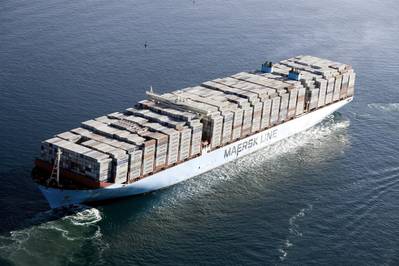GE’s Marine Solutions has signed a contract to provide auxiliary electric systems to containership operator Maersk Line’s second generation Triple-E vessels, thus representing GE’s entry into the container shipping industry.
The contract will see GE provide Maersk Line with its new Power Take Off/Power Take In (PTO/PTI) technology, which consists of two drives, two induction motors and a power management system. The solution provides excess power on demand while reducing fuel consumption, GE said. When not being used to propel the vessel, the PTO/PTI technology uses the surplus energy to power onboard systems and equipment.
The PTO/PTI solution provided to Maersk Line for 11, second generation Triple-E container vessels with a capacity of 19,630 TEU, is comprised of a shaft generator motor installed between the main engine and the propeller. It acts as either a generator or a booster to generate electricity from slow streaming speeds all the way up to the design speed of the vessel. The PTO/PTI technology will be installed onboard vessels built by the DSME shipyard in Korea.
The PTO/PTI technology harnesses the mechanical energy of the vessel’s drive shaft to convert it into electrical energy. This excess energy is then directed to onboard systems when it is required, which diminishes the need to burn fuel to power these systems. The result in fuel savings is significant, GE said, especially when coupled with improved operational flexibility. The electric machine is equipped with induction motors instead of synchronous motors. By removing transformers, it offers a simpler design and therefore reduces the complexity of the system, making it more reliable and requiring less CAPEX. The arrangement of induction motors reduces the frequency and extent of maintenance, and combined with the system’s fuel saving characteristics, bringing down the operational expenses for customers.











